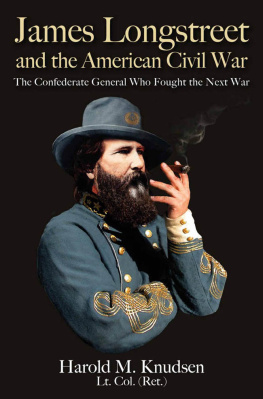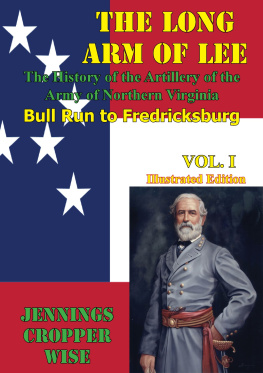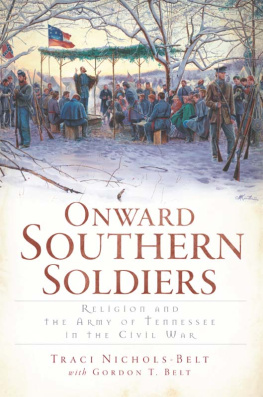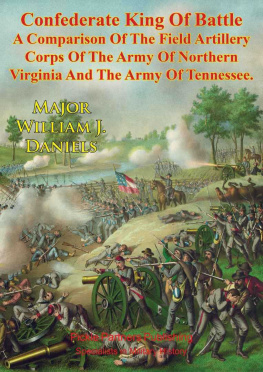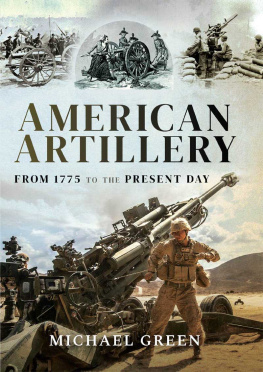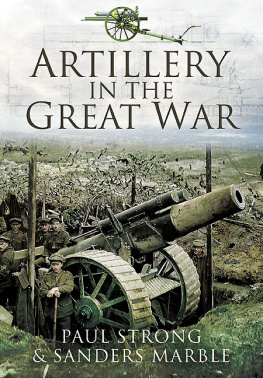Copyright 1997 by Louisiana State University Press
All rights reserved
Manufactured in the United States of America
First printing
06 05 04 03 02 01 00 99 98 97 5 4 3 2 1
Designer: Amanda McDonald Key
Typeface: Sabon
Typesetter: Impressions Book and Journal Services, Inc.
Printer and binder: Thomson-Shore, Inc.
Library of Congress Cataloging-in-Publication Data
Hughes, Nathaniel Cheairs.
The pride of the Confederate artillery : the Washington Artillery in the Army of Tennessee / Nathaniel Cheairs Hughes, Jr.
p. cm.
Includes bibliographical references (p. ) and index.
ISBN 0807121878 (cloth : alk. paper)
1. Confederate States of America. Army. Washington Artillery Battalion {New Orleans, La.). Company, 5thHistory. 2. New Orleans (La.)HistoryCivil War, 18611865. 3. United States-HistoryCivil War, 18611865Regimental histories. 4. Confederate States of America. Army of TennesseeArtillery. 5. United StatesHistoryCivil War, 18611865Artillery operations, Confederate. I. Title.
E565.7.W2H84 1997
973.7'468dc21
9716236
CIP
The paper in this book meets the guidelines for permanence and durability of the Committee on Production Guidelines for Book Longevity of the Council on Library Resources.


PREFACE
I was introduced to the Fifth Company of New Orleans, Washington Artillery, by a sixteen-year-old, an impressionable St. Louis boy. He had left home in August, 1861, trailing after an older brother he adored. They had gone south to become Confederates. Through young Phil Stephensons eyes I first saw the battery in bivouac at Corinth, Mississippi, on the eve of Shiloh. The men of the Fifth Company had just arrived after a long, hard march and were sitting around their campfires laughing and singing, drawing attention to themselves by their gaiety. Colorful in speech and dress, they represented sophisticated New Orleans come to backwoods Mississippi.
Rich boys. Some even had bodyservants along, to cook, to pack their haversacks. Could they fight, would they fight, the older Stephenson wondered. Or were they here posturing, like pretty songbirds poised to take flight when rain storms drenched their campfires and blew down their tents, when mud encased the wheels of their cannon and angry Yankee bullets ripped through the bright red facings of their uniforms?
I wondered too. How did they fare? Who were they really?
I had never heard of them, frankly, that is, the Fifth Company, Washington Artillery of New Orleans. I knew of Slocombs battery with the Army of Tennessee, certainly, and I was familiar with the Washington Artillery, the toast of Robert E. Lees artillery units, the heroes of Fredericksburg, Longstreets darlings. But there were just four companies, batteries, in the Washington Artillery, were there not?
There were five. This is the story of the Fifth, the company that never fought with Lee or Longstreet, the battery that never went to Virginia. This was the battery that fought from Perryville to Mobile, from Atlanta to Jackson.
It would prove a different journey for me. In the past I had done biography and battle study, but never pulled together the story of a military unit. For that matter, I had paid little attention to Civil War artillery. Oh, I knew how cannon functioned, I thought. After all, I had done the work myself with 75 mm howitzers mounted in turrets and 105 mm field pieces. I had run a fire direction control center. My oldest son, Frank, had been a Desert Storm battery executive officer and shared his experiences with me.
I discovered I had much to learn. I did not know a limber from a caisson and had never heard the term pendulum-hausse. But that is why one does a book such as this. The search satisfies curiosity and almost invariably chips awayif not reshapes totallypreconceptions. Ignorance surfaces. One ought to finish such an adventure in historical digging with a fresh view, and usually a surprise or two. Such I found to be true in sharing the life of the Fifth Company.
Please bear in mind that this was a silk stocking unit, much like the cocky easterners from the Army of the Potomac brought west by Joe Hooker in the fall of 1863 to join Grants army at Chattanooga. One had equal men for associateseducated, refined comrades.
Besides, the artillery was thought to be by far the easiest branch of the service. But perhaps the most dangerous. What happened when enemy riflemen closed to within two hundred yards of a piece standing in the open, its gunners frantically loading a round of canister? What happened when the batterys supporting infantry melted away to the rear, leaving them isolated and exposed? What happened when enemy sharpshooters disabled so many horses that the gun could be withdrawn only by hand?
As the war wore on, the employment of artillery by the Army of Tennessee tended to become more and more concentrated. Rather than independent batteries working with individual infantry brigades, as in 1862, they were utilized and controlled more and more in battalion organization, at least until John B. Hood came on the scene and artillery doctrine and employment degenerated. Concentration of firepower can be seen as early as Murfreesboro. Certainly this was true by the time Joseph E. Johnston overhauled artillery organization and usage in early 1864. Cuthbert H. Slocomb himself, although reputedly refusing promotion time and time again, would fight his last battle as an artillery battalion commander.
For most of the war the Fifth Company would be over-matched and outgunned by the Federal batteries it opposed (dueled in Civil War artillery parlance). Not when there was close-in fighting, however. Few artillery outfits could equal the company at such. The shock power of their canister at Murfreesboro, for instance, could break enemy units and disperse attacks even when it did not hit enemy soldiers.
There were a number of Washington Artillery units in the Confederate army, at least three of which fought with the Army of Tennessee. This, of course, confused contemporaries of the Fifth Company (Confederate and Union), not to speak of latter-day historians. I, for instance, never thought to distinguish between Capt. Isadore P. Girardeys Washington Artillery of Augusta, Georgia, and the Washington Artillery of New Orleans. Perhaps that is the reason the Fifth Company is usually referred to in the annals of the Army of Tennessee as Slocombs battery.
In preparing this study I came to appreciate another aspect of unit history. It can reorder the familiar in a refreshing way. The war in the West, when viewed from the perspective of the Fifth Company, appears different. Terrain does too, for that matter.


